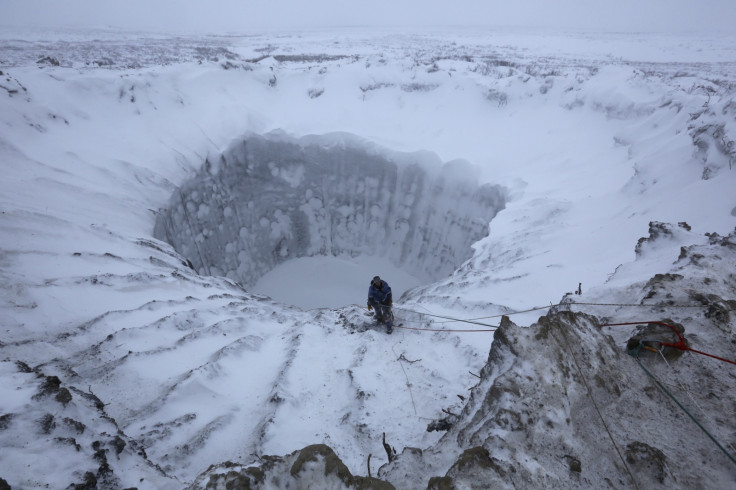Siberian tundra wobbling like a waterbed from methane gas leak
Patches of ground on Bely Island bubbles underfoot in what is believed to be a newly recorded phenomenon.
Patches of grassland on the Siberian tundra have turned into what looks like a waterbed, bobbing up and down when trodden on by scientists. Footage of the phenomenon, which is not believed to have ever been recorded before, was taken by a team of scientists on a research expedition to the remote Bely Island.
Alexander Sokolov and Dorothee Ehrich said they found 15 patches of ground that appeared to bubble or tremble and when they punctured them, methane and carbon dioxide was released, the Siberian Times reports. While further research will be necessarily, the team believes an unusually hot summer has caused permafrost to thaw, releasing methane gas locked up in the ground.
The Siberian tundra made headlines over recent years as a result of a massive crater that opened up in 2013. Dubbed the 'end of the world crater', how and why it formed was a complete mystery. Earlier this year, it was announced that dozens of new craters have since opened up.
Professor Vasily Bogoyavlensky, from the Russian Academy of Sciences, called for an urgent investigation into their formation. "These objects need to be studied, but it is rather dangerous for the researchers. We know that there can occur a series of gas emissions over an extended period of time, but we do not know exactly when they might happen," he said.
One of the most popular theories is that the craters formed as a result of global warming. As the permafrost melted from higher global temperatures, methane gas was released, leading to an explosion and the appearance of craters. The ground on Bely Island – farther north than the craters - could be the process of methane leaking into the ground caught in action, scientists say.

© Copyright IBTimes 2025. All rights reserved.






















